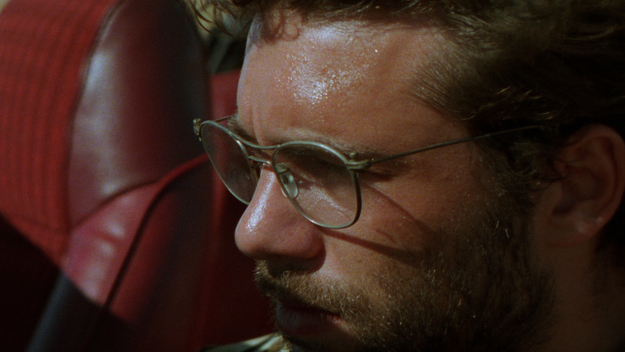
Bas Jan Ader: Transforming Fate into Artistic Expression

HAMBURG, Germany — Only July 9, 1975, the artist Bas Jan Ader, age 33, set sail from Cape Cod, intending to cross the Atlantic in a 12.6-foot vessel called Ocean Wave and then mount an exhibition at the Groninger Museum in his native Netherlands.
The journey was, famously, never completed. The battered boat was found off the coast of Ireland months later, but there was no trace of the artist beyond a few personal belongings. This now 50-year-old art world tragedy, which began as part of the artist’s In Search of the Miraculous trilogy (a three-part performance, with the transatlantic journey intended as the second part), made Ader into the consummate artist’s artist and the subject of much study and discussion.
A half-century later, this and other works, all produced between the late 1950s and Ader’s untimely disappearance, are the subject of I’m Searching …, a rare solo exhibition at the Hamburger Kunsthalle. The show is commemorative and comprehensive: Exhibited here for the first time are early works on paper from a portfolio recently found in Drieborg, Netherlands. Also new is a fabricated version of a neon piece in primary colors spelling “Piet Niet” — an homage to, and rejection of, Piet Mondrian, whose ideas Ader closely studied — which previously existed only as a sketch for a planned installation. But viewers get the artist’s greatest hits too: his four “Fall” videos from the early 1970s and, of course, the poignant “I’m too sad to tell you” (1971), in which an unspeakably pretty, young Ader — in a tight closeup on black and white film — weeps inconsolably and inexplicably for about three and a half silent minutes.
The show unfolds chronologically, and the earliest works are unsurprisingly in traditional mediums. Charcoal drawings, swirly drawings of bicycles, and abstracted minimalist portraits are clearly student experiments, made while he was at the Rietveld Academy (where he enrolled at age 17), exposing the young artist’s attempts to find a voice and identity. But they hint at later forays into ideas like land- or seascape, balance, and maintaining or losing control. Additionally exhibited for the first time is a painted seascape Ader made while working as a farmhand in the Netherlands in 1961. In it, sea and sky meld in fields of gray-blue color that he’d leave behind when he moved to California in 1962.
After failing out of Rietveld, he earned an MFA from Claremont Graduate University in Los Angeles. In the US, he quickly dove into photography and film, often to document his solo performances. Even in these early years the work was concerned with existential issues, including failure and emotional vulnerability, as well as longing, expressed in word pieces like “Please Don’t Leave Me,” featuring these handwritten words on the walls of his garage studio. For “All My Clothes” (1970), the artist has spread his clothing haphazardly on his small house’s shingled roof. In the two small photographs titled “Study for Farewell to Faraway Friends” (1970), Ader appears both standing and sitting on a grassy knoll gazing over the sea; the figure’s solitude perhaps evokes the Romanticism of Caspar David Friedrich’s “Wanderer Above the Mist” (1819) or “Monk by the Sea” (1810).
Falling as deliberate failing later becomes a recurring theme. The four now-iconic silent “Fall” shorts run on old 16mm film projectors in one large room at Hamburger Kunsthalle. In “Fall 1” (1970), Ader’s lanky body rolls off his own roof; in “Fall 2” (1970), he rides his bike into a canal in Amsterdam; in “Broken fall (organic)” (1971) he hangs and swings from the branch of a tree before falling into a stream. The action is a mix of slapstick and philosophical resignation. The two static projected images that represent “Untitled (Swedish Fall)” (1971) show Ader standing in a Swedish forest in one slide and on the ground, as if a felled tree, in the other; scholars have suggested that this piece alludes to Ader’s childhood — in 1944, when he was two, his father was executed in a forest after it was discovered that he’d assisted Jews in escaping the Holocaust.
Some later works are revived or reconstructed, like “Thoughts unsaid. Then forgotten” (1973/2023), an installation consisting of the above phrase written on the wall, and a bouquet of flowers: As the flowers wilt, the phrase is painted over, a gesture of erasure and